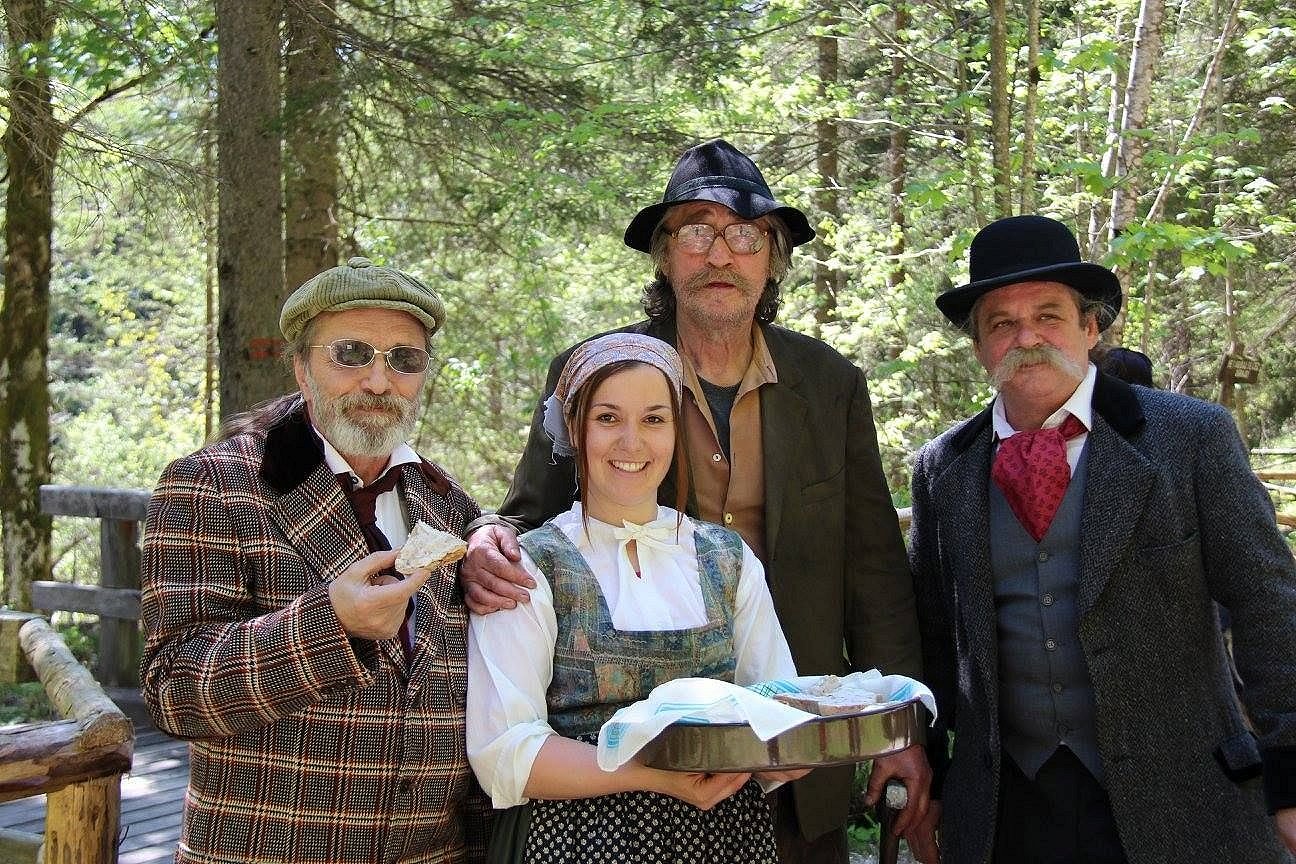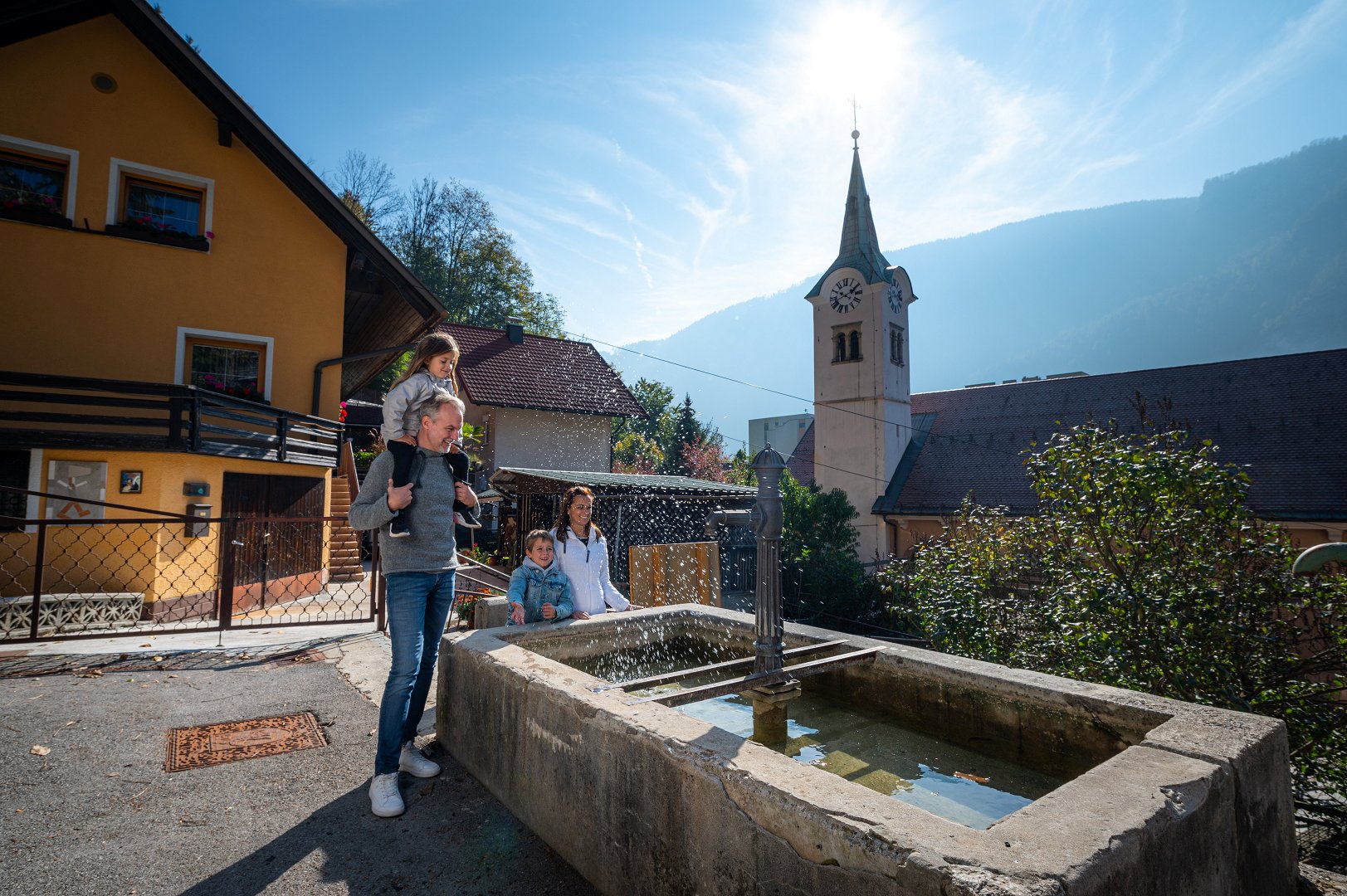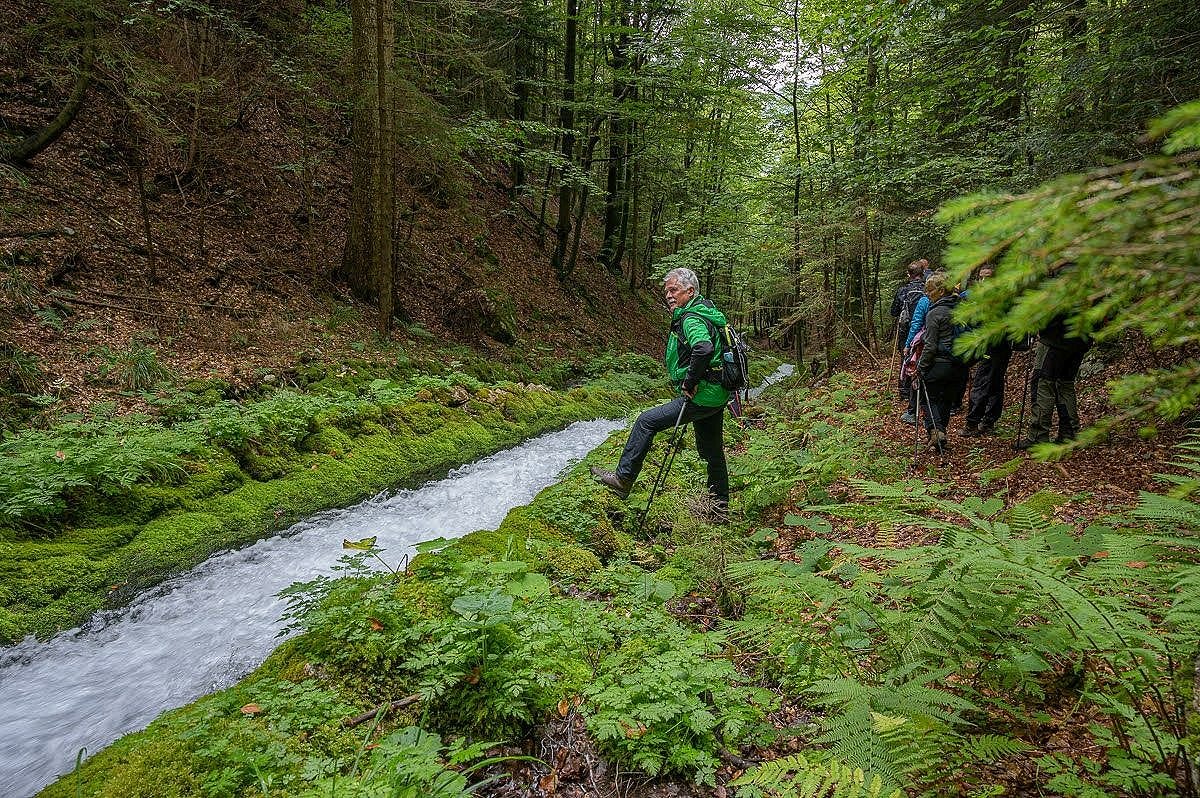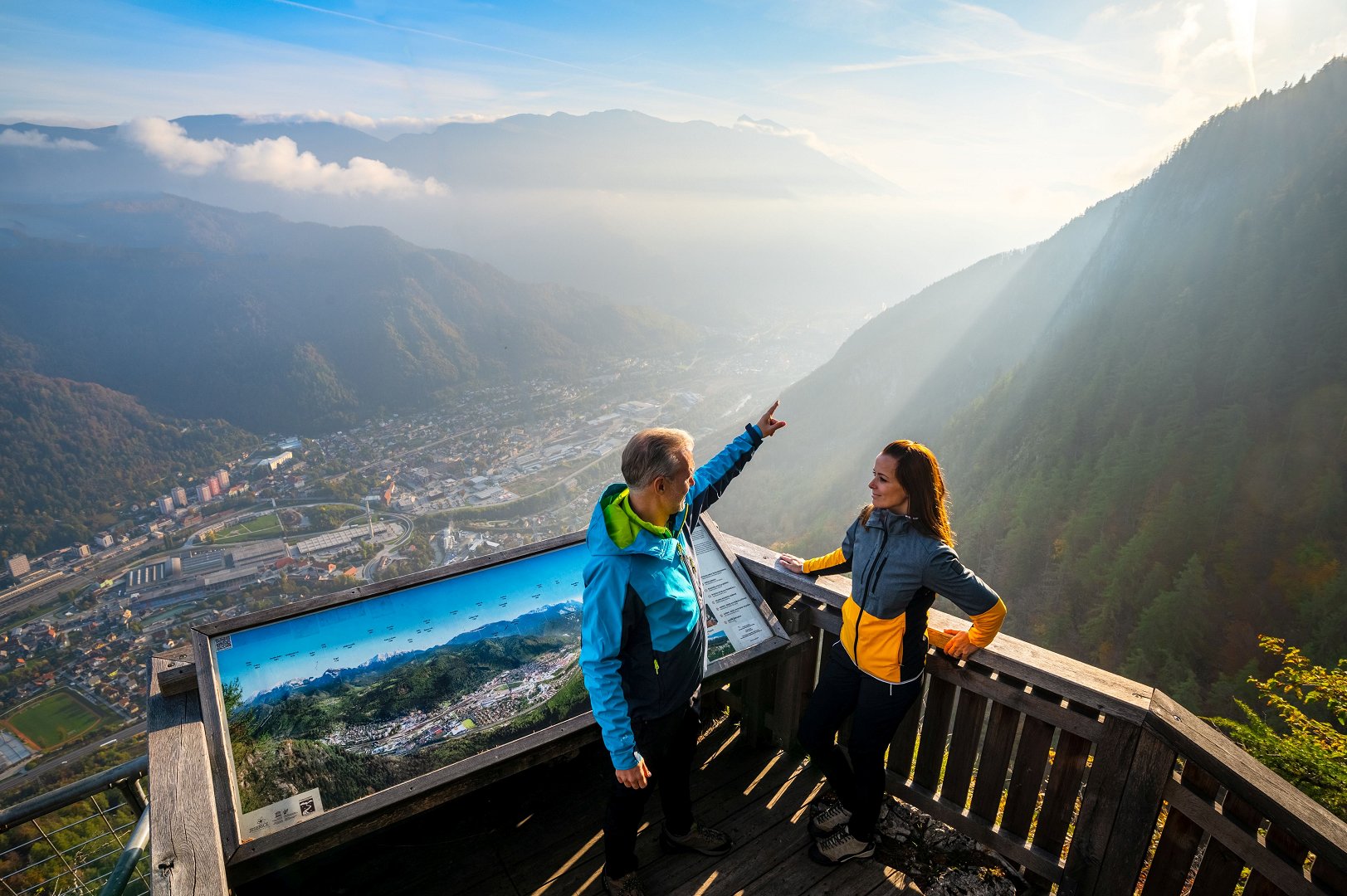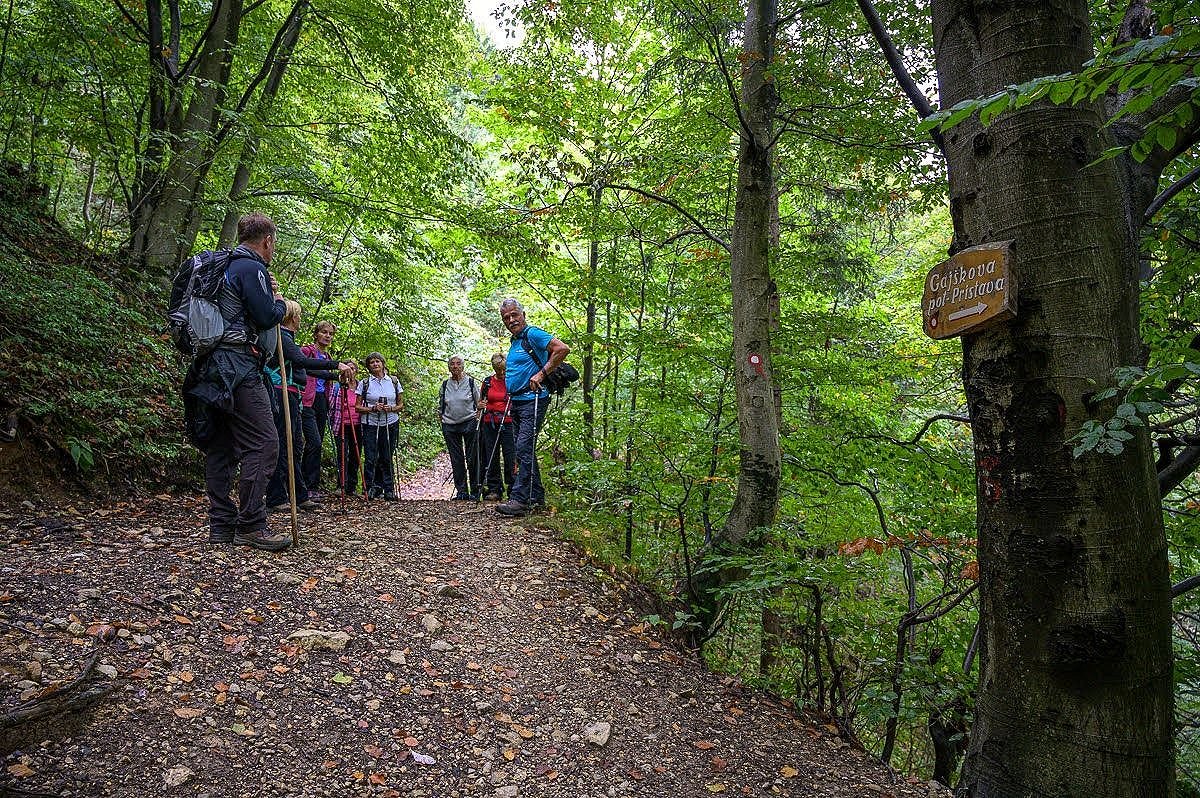Old Mining Route
The thematically structured Old Mining Route will take you back in time and reveal fragments of the everyday lives of the people who excavated and transported iron ore in the region.
Interesting sights along the trail: Stara Sava museum quarter, Upper Sava Museum (Slovenian Ironmaking Museum, Museum of workers’ culture Jesenice), Kos Manor, the historic district of Murova, Chapels of St. Barbara at Pejce, the Church of the Holy Cross in Planina pod Golico, former mining area of the Sava Cave, daffodil meadows in May.
Walking time: 3 h 30 min
Difference in elevation: 600 m
Difficulty: moderately difficult
For almost four hundred years, iron ore was transported from the mines in the Sava Caves to the ironworks settlement of Stara Sava along the old mining route. For the transport of ore, drivers ("furmani") used wagons called "žlajfe". They were pulled by small oxen, or "terci". The wagon's rear wheels were removed on a slope so that it could slide on the ground and thus brake. The most visible traces of braking are the so-called "glajžni" on the steepest parts of the route (wheel tracks). An accident occurred several times due to the heavy load and steep path. When a fatal accident occurred, a wooden sign called a "marterl" was sometimes placed, and the unfortunate event was drawn on it. There are chapels dedicated to St. Barbara, the patron saint of miners, at the beginning and end of the steepest section, known as Pejce. The drivers rested and inspected the harness at the upper chapel, and they stopped at the lower chapel to repair the harness. In addition to Saint Barbara, who is honoured on December 4, the miners honoured Saint Florjan, the protector against fire, who is honoured on May 4. Both days were miner holidays, or work days off.
The old mining route passes by the Church of the Holy Cross. Along the way, you can see the entrance to Karl's Tunnel. Roasting ovens or "roštance" were placed nearby. Bundles of wood and ore were loaded in these ovens in layers and roasted before being lowered into three-meter rectangular troughs filled with water to remove impurities. The stream here was dark in colour due to the washing of the ore, which is why it was named the Black Stream. Work in the mines of the Sava Caves was governed by a variety of legal documents. The oldest Ortenburg mining order, dating from 1381, is also the first mention of Jesenice.
Relive that era by going "back in time" with your family. On the announced group trip, you just might meet historical figures along the way (ironworker and mine owner Viktor Ruard, mine manager Heinrich Fessel, and miner Tona Hribar) who have a lot to say about the mining and iron industry in these areas.
Leaflet Old Mining Route (SLO version)
Leaflet Old Mining Route (ANG verzija)
Leaflet of the Sava Cave (ANG verzija)
Leaflet of the Historical Characters along the Old Mining Route
